0118 In the figure below, the sign-vehicle (SV), the sign-object (SO), and the sign-interpretant (SI) are labeled for the specifying sign (or, for scholastics, specifying extrinsic formal causality).
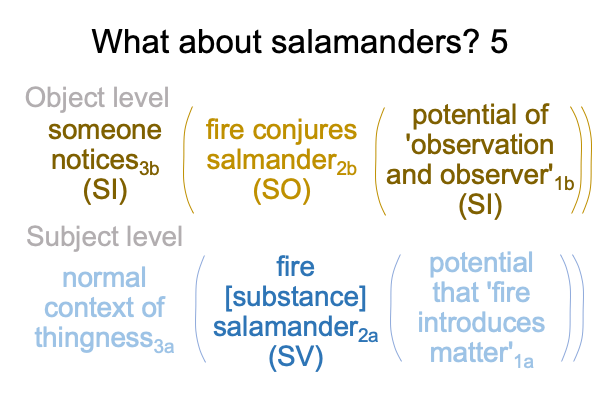
0119 At the start of chapter nine, Deely claims that triadic relations are the only modes of being that the finite mind can form by its properly cognitive activity.
This raises an awkward question, asking, “How do I know whether my finite mind agrees with any other?”
0120 Here, Deely makes a crucial point. Objective is not enough. My specifying sign-object is mine. What about others?
After all, I am a sheep. I worry about things like that.
0121 If everyone else experiences the same specifying sign-relation, and if we all share the same perspective, then I can assume that my objective sign-object is shared among subjects like myself (intersubjective).
Now, the confusion between subjective and objective among moderns becomes a little clearer. Moderns confound the specifying and exemplar signs. Moderns relabel “intersubjective” as “subjective”, because the inquirer’s frame shifts from situating content (according to the specifying sign) to contextualizing situation (with the exemplar sign).
On top of that, they relabel the suprasubjective (or perspective) level as “objective”.
0122 So, does Descartes convert the exemplar sign into a specifying sign?
Egads!
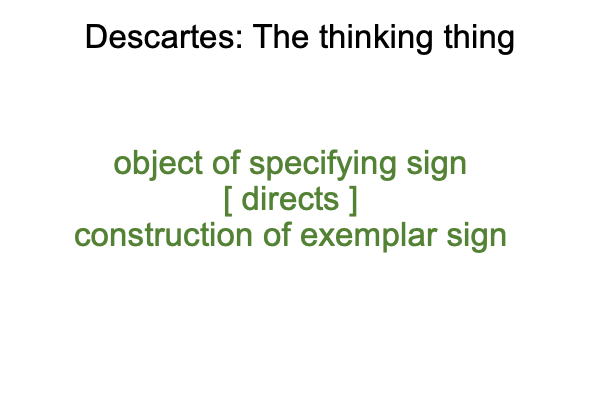
0123 Oh, I don’t want to step off that ledge.
So, let me back up and say that there must a perspective level (corresponding to Peirce’s thirdness) contextualizing a situation level (corresponding to Peirce’s secondness).
Here is a picture.
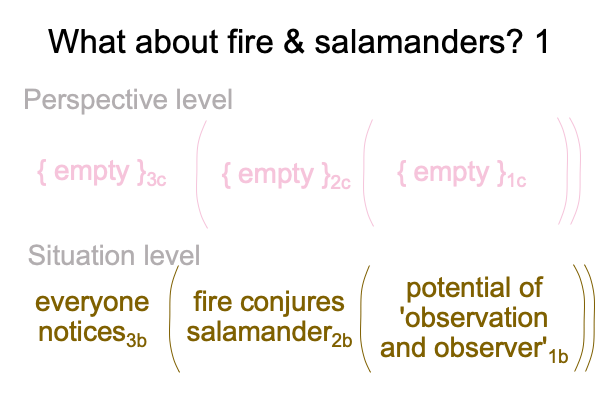
0123 According to Deely, there are two modes for a purely objective being, objective and intersubjective.
The situation level is objective, with respect to the specifying sign, and intersubjective, with respect to the exemplar sign.
The specifying sign couples the content (SV) and situation (SO & SI) levels.
The exemplar sign couples the situation (SV) and perspective (SO and SI) levels.
0124 In 1500, everyone agrees that fire conjures salamanders.
By 1600, lots of people are asking, “Does the claim make sense?”
That question raises the potential of contextualizing the (to the modern academic, “subjective”, and to the postmodern scholastic, “intersubjective”) situation-level actuality, the species expressa that fire conjures salamanders2b.
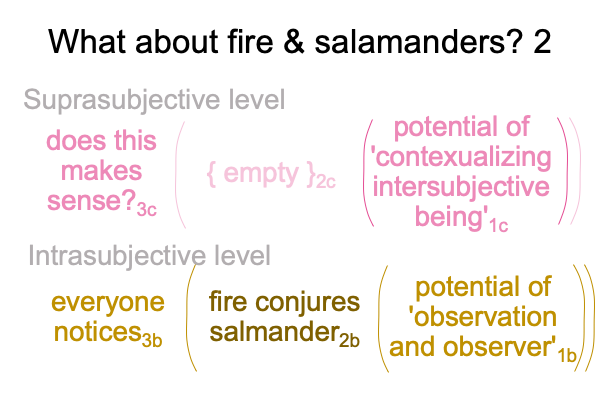
0125 At this point, the Baroque scholastics are going for broke.
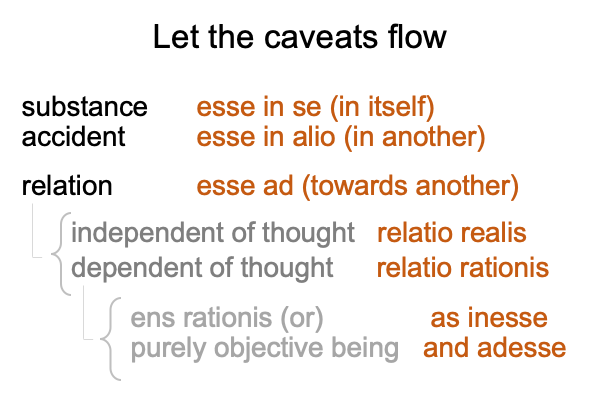
0126 Plus, Rene Descartes is telling everyone who will listen, “Salamanders are not born in fire.”
